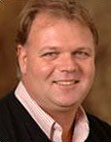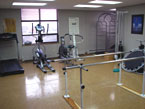 Chad Novasic is the President and CEO of Alliant Physical Therapy Group |
Basic Equipment for Starting a Private Physical Therapy Practice - Starting your own private physical therapy practice can be very exciting and challenging. There are a number of questions that need to be answered and a multitude of tasks to complete. When selecting equipment for your practice there are a variety of options available that may vary considerably in regards to costs. Since most new private practice owners may have a limited budget, a detailed analysis of your specific needs and the costs required to satisfy those needs should be carefully thought out. One of the biggest mistakes a new owner can make is to “put the cart in front of the horse”.

Often times, many new private practice owners will feel like they should have all of the same equipment which established clinics have. One thing that a new practice owner should remember is that those established clinics most likely didn’t have every single piece of equipment from the onset. It most likely took time for those clinics to further establish themselves both market wise and financially before pursuing further purchases.
When selecting equipment, the APTA Private Practice Section’s “The How-To Manual” (1) recommends the following:
1) create two lists
a) the first list should include a list of the diagnoses, joint problems, and patient populations which you most likely will be treating.
b) the second list should include the most important type of equipment and clinical furniture for each clinical category.
2) rate the overall importance of each piece of equipment on a scale of 1 to 5 (1 not very important – 5 very important)
3) rate the versatility of each prospective piece of equipment on a scale of 1 to 5 (1 not very versatile – 5 very versatile)
4) select equipment items, within your budget, that meet all your essential needs and that because of their versatility can serve as many of your secondary and tertiary needs as possible
Utilizing the selection process mentioned above should allow you to not only have a better understanding of your needs but be able to prioritize them as well. A list of some of the equipment to consider for starting a private physical therapy practice are included below:
Office Equipment
• phone
• printer/fax/copier
• computer/modem/router
• various business software
• office furniture
• credit card machine
• marketing material – ie. referral pads, brochures, business cards, etc.
Clinical Equipment
• goniometers
• tape measurer
• treatment tables (wooden or high/low)
• stools
• large mirror
• stationary bike
• treadmill
• thera-tubing/thera-band
• hand weight set
• physioball
• freezer/ice packs
• ultrasound machine/ultrasound gel warmer
• e-stim machine
• hydroculator/hot packs
• parallel bars or railing
• medicine balls
• wand/stick
• pulleys set
• exercise prescription software program or exercise flashcards for copy
• stackable steps

As your practice continues to grow you will learn more about your needs and you will eventually be able to purchase the additional equipment which will make the most sense for your practice. Meanwhile don’t hesitate to generate a wish list of equipment which you would like to obtain in the future once your practice is more established. You can utilize the same selection process mentioned above to prioritize your wish list. Through careful planning and hard work you will realize your full potential and enjoy the benefits of being in private practice even more.
Many clinics find that early cash flow is a problem. One easy way to help your cash flow is to lease your long term equipment. In start up practices “cash is king” so don’t tie up all of your start up capital in equipment.
If you have additional questions about selecting equipment for your private physical therapy practice or questions in general about starting your own practice, please contact Chad at chadnov@aol.com.
Last revised: April 11, 2010
by Chad Novasic, PT
References
1) Private Practice Section, American Physical Therapy Association. Edited by Glinn, J & McMenamin, P. (2002) Private Practice Physical Therapy: The How-To Manual.
